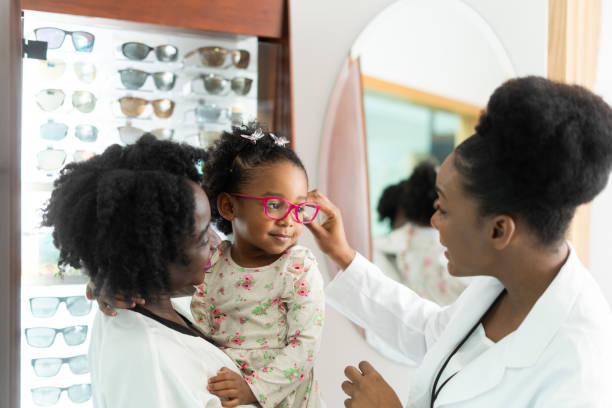5 Sneaky Signs Your Child Needs An Eye Checkup


Eye health is critical. Especially for young kids who are just beginning to come into their own. Unfortunately, many kinds of vision problems – especially those among young ones – can be easily overlooked.
Among Black children, it’s even more common. According to the National Center for Health Statistics, Black kids are roughly 50 percent less likely to receive vision care than white kids. In fact, 25 percent of school-aged kids have vision issues that are not diagnosed.
Worried about a lack of healthcare access? Notice your child struggling with potential vision issues? Simply not sure and want to get ahead of it?
Here are five signs you might miss that your kid needs a checkup.
1. Red/Watery Eyes
It’s easy to dismiss red and watery eyes as signs of fatigue or allergies, but did you know they may be one of the early signs of vision problems? Turns out, chronic eye irritation causes children to strain to see properly.
The result? They end up rubbing their eyes, having glassy and red eyes, and looking like they’re under a serious allergy attack!
If you’re noticing red or watery eyes without an apparent cause, it might be time to look into an eye doctor visit.
2. Sensitivity to Light
Also called photophobia, light sensitivity is caused by inflammation in the eye and structural issues with the eye that trigger light processing problems. In children sensitive to light, you will often notice squinting and the avoidance of brighter lights.
In some cases, it might even be cataracts!
If your kid is constantly complaining about bright lights, squinting or shutting the eyes, or even suffering from nausea and headaches, it could be due to photophobia.
RELATED: All That Screen Time Could Be Ruining Your Kid’s Eyes
3. Lack of Hand-Eye Coordination
Without proper vision, it can be especially challenging to develop proper hand-eye coordination. Look for difficulty in doing regular recreational activities. Does your kid really struggle to catch a ball? How about art activities like drawing or painting?
In cases where precise visual-motor skills are required, your child will have noticeable struggles. Another thing to look out for are problems with bumping into objects and other signs of clumsiness.
Whether it’s difficulties with writing and handling scissors, or problems with various sports, consider the possibility of vision trouble.
4. Head Tilting
Oftentimes, when kids have trouble seeing, they may try to compensate by tilting their heads. This happens because they’re trying to adjust their line of sight. In some cases, this is caused by vision problems such as astigmatism or crossed eyes.
Is the head tilting due to vision problems? The best way to know is to note if it happens when your child is focusing on something. Does your child also close one eye or even make complaints about double vision?
If so, it’s probably time to see an ophthalmologist.
5. Short Attention Span
This one’s a little surprising.
After all, many times when we think of attention problems, we think of disorders like ADHD or other neurobehavioral issues. However, what many parents (and doctors) overlook is vision trouble. Just think about it. If a child struggles to see the board clearly or has difficulty reading, he or she can’t focus on the lesson.
And if a kid can’t focus in school, they’re more likely to act out.
If attention problems are due to vision trouble, consider the situation. Does the child struggle with close-up activities? Does he or she have headaches or heavy, tired eyes? Does your kid try to get out of doing tasks that demand consistent vision, like homework?
If so, you may be dealing with attention difficulty due to vision trouble.
RELATED: Should You See an Optometrist or an Ophthalmologist?
Getting to the Bottom of It
Now obviously, proper diagnoses can be tough. Not only are Black children less likely to receive regular eye exams, but they’re also more likely to suffer academic performance and quality of life issues as a result.
Then there’s the financial burden. Costs for glasses and contact lenses can add up, making financial barriers a serious consideration for many families. This is why it’s always important to speak to an insurance representative about your plan, or if need be, seek government assistance.
The American Optometric Association suggests your kid gets their first eye exam at just six months of age. The second should be at three years old, and then every year once school starts.
Oftentimes, schools also offer vision screenings, so if you suspect any issues, you’ve got resources. Just stay educated, look in your community, and your kid will see a clear solution in no time!




